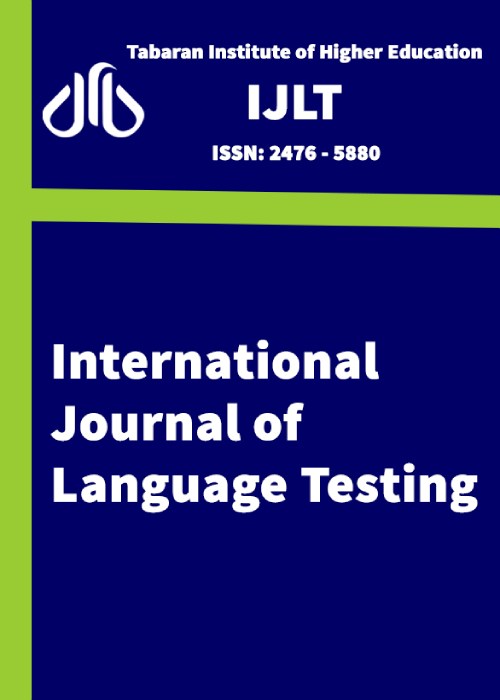فهرست مطالب
International Journal of Language Testing
Volume:1 Issue: 1, Oct 2011
- تاریخ انتشار: 1390/10/11
- تعداد عناوین: 4
-
Page 1The assessment of writing has always been threatened due to raters’ biasedness. There is evidence that rater training can be effective in eliminating extreme differences in raters’ severity, and increasing the self consistency of raters by reducing individual biases of raters (Weigle, 1994a). However, there is little research documenting the exact as well as the amount of the effectiveness of training in reducing this biasedness. The purpose of this study is to investigate how judgments of raters are biased towards certain criteria before and after the training program in assessing second language essay compositions. 12 EFL raters scored 40 pre-rated benchmark essay compositions rated by an authorized IELTS trainer. These essay compositions were scored before and after the training program. The results show that most raters were able to modify their scoring, resulting in greater intergroup consistency and reduced biasedness and severity / leniency. Raters who were identified as being highly severe / lenient and biased in particular categories of the rating scale were no longer biased after training.Keywords: Rater training, Writing assessment, Rater's Biasedness, Rater's severity, Rater's leniency
-
Page 17The aim of this paper was to investigate the relationship between IQ and test format considering test fairness. This study took this relationship into account to see if people (examinees) with different levels of IQ performed differently on different test formats. To this end, 90 advanced learners of English from College of Ferdowsi University of Mashhad, Iran were asked to complete Wechsler’s IQ test and a reading test which included four test formats (multiple choice, cloze test, c-test, summary writing) prepared by the researchers. The results of the correlational study indicate a significant relationship between IQ and its subscales and some test formats. The result of the t-test also demonstrated that the differences of the mean between high and low IQ groups were significant regarding certain test formats. The results of the regression equations also indicated that IQ and some of its subscales can also predict performance on certain test formats.Keywords: IQ, Reading, Test fairness, Test format
-
Page 30This study explored the relationship between text authenticity and test takers’ performance on C-Tests. To fulfill the objective a single C-test was developed on an authentic text (AC-test) and along with standard C-Tests (Klein-Braley 1997) and a disclosed version of the Test of English as a Foreign Language (TOEFL) was administered to one hundred and thirty five junior and senior undergraduate university students majoring in English language and literature, English translation and teaching English as a foreign language in two universities in Iran. Similar to their standard counterparts, the AC-test correlated significantly not only with the TOEFL and its structure, written expression, vocabulary and reading comprehension subtests and thus established itself as an externally valid measure of English language proficiency. Although high correlation coefficients obtained between the authentic and standard CTests (r = 0.87, p <.01) showed that they could be used interchangeably, the AC-Test enjoyed slightly higher internal validity and noticeably higher reliability. The implications of the findings are discussed within a foreign language testing context.Keywords: C, Test, cloze test, Authenticity, reduced redundancy, schema theory
-
Page 42The nature of language proficiency has been the object of much theoretical discussion and empirical investigation for approximately 60 years. So far, different models of proficiency have been proposed to define language and language ability, either has approached it through a different prospective and meanwhile they have added more complications to the definition. This article is intended to accomplish a historical review of more remarkable models of language proficiency and some of their contributions in developing our understanding of what we, as language assessors, have to measure. Also, the writers try to discuss some of the complications and misunderstandings in these models.Keywords: Model, Framework, Language Proficiency, Construct Validity


